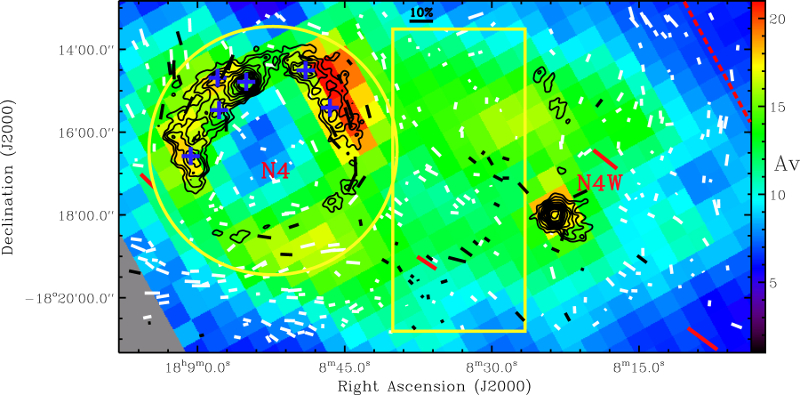| EPoS Contribution |
|
The Magnetic Fields in HII Region-Driven Bubbles
Zhiwei Chen PMO, Nanjing, CN | |
| Many studies investigate the star formation activities in HII region-driven bubbles, and propose triggered star formation phenomenon for some bubbles. Nevertheless, these observational cases are challenged by the magnetohydrodynamic simulation results which show that the presence of magnetic field might reduce the efficiency of star formaton triggered by massive stars because the strong, ordered magnetic field hinders formation of thin-shell instabilities. However, detailed observational studies for magnetic fields of bubbles are still rare, and are of great importance to justify the influence of magnetic fields on star formation triggered by massive stars. We present two observational studies for magnetic fields in two HII regions, M17 and N4 bubble, which are very different in physical properties. By analyzing the near-IR polarization data of M17 and N4, we are able to reveal the magnetic fields in them. For both regions, the magnetic fields in the swep-up shells are deformed due to the expansioins of HII regions, and the field strengths within the shells are enhanced. For M17, the influence of magnetic fields on triggered star formation by the massive stars is umbigious, because the HII region is interacting with a giant molecular core. In contrast, N4 bubble is probably created by a single massive star, and an ideal template of "collect and collapse" model. The magnetic field in the swept-up shell of N4 is strongly enhanced, and the mass-to-flux ratios of the clumps in the swept-up shell are far less than 1, suggesting that the magnetic field has the potential to hinder star formation triggered by the HII region expansion. | |
 | |
| Caption: H-band polarization of background stars (white lines) overlaid on the extinction map derived from 12CO 1-0 data. Very red background stars (Av mag) are highlighted as black lines. The red lines are 353 GHz dust polarization calculated by the 5×5 rebinning of the Planck data with an original pixel scale of 1'. The black contours, of 0.26 to 1.16 mJy/beam with an interval of 0.1 mJy/beam, are 870 micron dust continuum emission from ATLASGAL. | |
| Collaborators: Z. Jiang, PMO, CN M. Tamura, NAOJ, JP R. Chini, RUB, DE J. Kwon, ISAS, JP A. Roman-Lopes, ULS, CL |
Key publication
Suggested Session: Magnetic fields |

